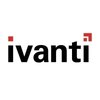


i
Allied
Globetech
Work with us
![]()
Filter interviews by
Allied Globetech Interview Questions and Answers
19 Interview questions
HTTP is a protocol for transferring data on the web, while HTTPS is its secure version, encrypting data for safety.
HTTP stands for HyperText Transfer Protocol.
HTTPS stands for HyperText Transfer Protocol Secure.
HTTP operates on port 80, while HTTPS operates on port 443.
HTTPS uses SSL/TLS to encrypt data, ensuring secure communication.
Example of HTTP: http://www.example.com
Example of HTTPS: https://www.example.com
A firewall is a network security device that monitors and controls incoming and outgoing network traffic based on predetermined security rules.
Acts as a barrier between trusted and untrusted networks.
Can be hardware-based (like a router) or software-based (like an application).
Filters traffic based on IP addresses, protocols, and ports.
Examples include Windows Firewall, Cisco ASA, and pfSense.
Can prevent unauthori...
Firewalls protect networks by controlling incoming and outgoing traffic based on predetermined security rules.
Traffic Filtering: Firewalls analyze data packets and allow or block them based on security rules.
Stateful Inspection: They track active connections and determine which packets to allow based on the state of the connection.
Proxy Service: Firewalls can act as intermediaries between users and the internet, h...
APIs, or Application Programming Interfaces, enable different software applications to communicate and share data seamlessly.
APIs allow for integration between different systems, such as a mobile app accessing a web service.
RESTful APIs use standard HTTP methods like GET, POST, PUT, and DELETE for operations.
SOAP APIs rely on XML for message format and are often used in enterprise environments.
Examples include the...
Key Java concepts assessed in interviews include OOP principles, exception handling, collections, and multithreading.
Object-Oriented Programming (OOP): Concepts like inheritance, encapsulation, polymorphism, and abstraction are fundamental.
Example: Inheritance allows a subclass to inherit properties and methods from a superclass.
Exception Handling: Understanding try-catch blocks, custom exceptions, and the importa...
Apigee is a platform for developing and managing APIs, enabling secure and scalable connections between applications and services.
API Management: Apigee provides tools to create, manage, and secure APIs.
Analytics: It offers insights into API usage and performance, helping businesses optimize their services.
Security: Apigee includes features like OAuth, API keys, and traffic management to protect APIs.
Developer Por...
Apigee policies are pre-defined rules that manage API behavior, security, and traffic control in API management.
Traffic Management: Policies like Rate Limiting control the number of requests a user can make in a given timeframe.
Security: OAuth and API Key validation policies ensure that only authorized users can access the API.
Transformation: Policies such as JSON to XML conversion allow for data format changes be...
Apigee flow manages API requests and responses through a series of configurable steps for security, transformation, and routing.
Flow consists of a series of steps: request, response, and error handling.
Policies can be applied at various stages, such as security (OAuth, API key validation).
Traffic management features include rate limiting and quota enforcement.
Transformations can be applied using policies like JSON...
UDP is a connectionless protocol that enables fast, low-latency communication, ideal for real-time applications like streaming.
Connectionless Protocol: UDP does not establish a connection before sending data, reducing latency, which is crucial for real-time applications.
Low Overhead: UDP has minimal protocol overhead compared to TCP, allowing for faster data transmission, beneficial for streaming audio and video.
N...
Encryption and decryption methods can be applied at various layers of the OSI model to secure data transmission.
Application Layer: Use of SSL/TLS for encrypting HTTP traffic (HTTPS).
Transport Layer: Implementation of secure protocols like DTLS for UDP traffic.
Network Layer: IPsec can encrypt data packets for secure communication over IP.
Data Link Layer: WPA2 encrypts data in wireless networks to protect against ea...
Allied Globetech Interview Experiences
10 interviews found
I appeared for an interview in May 2025, where I was asked the following questions.
- Q1. What is an API, and can you provide two to three real-time examples of its usage?
- Ans.
An API (Application Programming Interface) enables different software applications to communicate and share data seamlessly.
1. Social Media Integration: APIs allow apps to share content on platforms like Facebook or Twitter.
2. Payment Processing: Services like PayPal and Stripe provide APIs for secure online transactions.
3. Weather Data: Apps use APIs from services like OpenWeatherMap to fetch real-time weather informa...
- Q2. What are the detailed functions and features of a firewall?
- Ans.
Firewalls protect networks by controlling incoming and outgoing traffic based on predetermined security rules.
Traffic Filtering: Firewalls analyze data packets and allow or block them based on security rules.
Stateful Inspection: They track active connections and determine which packets to allow based on the state of the connection.
Proxy Service: Firewalls can act as intermediaries between users and the internet, hiding...
I appeared for an interview in May 2025, where I was asked the following questions.
- Q1. Knowledge About Java
- Q2. Network Security
- Q3. What is API and How its work?
- Ans.
API (Application Programming Interface) enables software applications to communicate and interact with each other seamlessly.
APIs allow different software systems to exchange data and functionality.
For example, a weather app uses an API to fetch weather data from a remote server.
APIs can be RESTful, using HTTP requests to access and manipulate data.
Another example is payment gateways like PayPal, which provide APIs for...
I appeared for an interview in May 2025, where I was asked the following questions.
- Q1. What is a firewall?
- Ans.
A firewall is a network security device that monitors and controls incoming and outgoing network traffic based on predetermined security rules.
Acts as a barrier between trusted and untrusted networks.
Can be hardware-based (like a router) or software-based (like an application).
Filters traffic based on IP addresses, protocols, and ports.
Examples include Windows Firewall, Cisco ASA, and pfSense.
Can prevent unauthorized a...
- Q2. What are HTTP and HTTPS?
- Ans.
HTTP is a protocol for transferring data on the web, while HTTPS is its secure version, encrypting data for safety.
HTTP stands for HyperText Transfer Protocol.
HTTPS stands for HyperText Transfer Protocol Secure.
HTTP operates on port 80, while HTTPS operates on port 443.
HTTPS uses SSL/TLS to encrypt data, ensuring secure communication.
Example of HTTP: http://www.example.com
Example of HTTPS: https://www.example.com
I applied via Walk-in and was interviewed in Jun 2024. There were 3 interview rounds.
(3 Questions)
- Q1. Explain Your role in your project.
- Q2. Spring Boot Annotations
- Q3. Explain Version Control
(1 Question)
- Q1. Basic discussion about company
(1 Question)
- Q1. Basic discussion on people management, Team building, Attitude
Interview Preparation Tips
Skills evaluated in this interview
I appeared for an interview before Mar 2024, where I was asked the following questions.
- Q1. How does OOPs in Java work explain it's benefits with real life examples?
- Q2. What are the uses of Data Structures and Algorithms (DSA) in programming?
- Ans.
Data Structures and Algorithms optimize data management and processing, enhancing performance and efficiency in programming tasks.
Efficient data storage: Arrays, linked lists, and trees help organize data for quick access.
Optimized searching: Algorithms like binary search reduce time complexity when finding elements in sorted data.
Improved performance: Using appropriate data structures can significantly speed up operat...
- Q3. What are the methods for encrypting and decrypting data within the OSI model?
- Ans.
Encryption and decryption methods can be applied at various layers of the OSI model to secure data transmission.
Application Layer: Use of SSL/TLS for encrypting HTTP traffic (HTTPS).
Transport Layer: Implementation of secure protocols like DTLS for UDP traffic.
Network Layer: IPsec can encrypt data packets for secure communication over IP.
Data Link Layer: WPA2 encrypts data in wireless networks to protect against eavesdr...
- Q4. What are the differences between cryptography and encryption, and which one is superior in certain contexts?
- Ans.
Cryptography encompasses encryption and other techniques for secure communication, while encryption specifically refers to data transformation.
Cryptography is a broader field that includes techniques like hashing, digital signatures, and key exchange.
Encryption is a specific method within cryptography that transforms data to prevent unauthorized access.
Example of encryption: AES (Advanced Encryption Standard) is widely...
- Q5. What are the differences between the TCP/IP suite and the OSI model?
- Ans.
The TCP/IP suite is a practical framework for networking, while the OSI model is a theoretical framework for understanding network protocols.
Layer Count: TCP/IP has 4 layers (Application, Transport, Internet, Network Interface) while OSI has 7 layers (Application, Presentation, Session, Transport, Network, Data Link, Physical).
Model Type: TCP/IP is a protocol suite used in real-world applications, whereas OSI is a conc...
- Q6. What was the need for the User Datagram Protocol (UDP), and how does it affect streaming?
- Ans.
UDP is a connectionless protocol that enables fast, low-latency communication, ideal for real-time applications like streaming.
Connectionless Protocol: UDP does not establish a connection before sending data, reducing latency, which is crucial for real-time applications.
Low Overhead: UDP has minimal protocol overhead compared to TCP, allowing for faster data transmission, beneficial for streaming audio and video.
No Gua...
- Q7. What are the benefits of using JAR (Java Archive) files in Java?
- Ans.
JAR files package Java classes and resources, enhancing distribution, versioning, and execution efficiency.
1. Packaging: JAR files bundle multiple Java classes and resources (like images and properties files) into a single archive, simplifying distribution.
2. Versioning: JAR files can include version information in their manifest, helping manage dependencies and ensuring compatibility.
3. Compression: JAR files use ZIP ...
Senior Consultant Interview Questions & Answers
posted on 10 May 2025
I appeared for an interview before May 2024, where I was asked the following questions.
- Q1. Apigee policies
- Q2. All the other technologies like kubernetes ,Linux.
I appeared for an interview before May 2024, where I was asked the following questions.
- Q1. What is Apigee?
- Ans.
Apigee is a platform for developing and managing APIs, enabling secure and scalable connections between applications and services.
API Management: Apigee provides tools to create, manage, and secure APIs.
Analytics: It offers insights into API usage and performance, helping businesses optimize their services.
Security: Apigee includes features like OAuth, API keys, and traffic management to protect APIs.
Developer Portal: ...
- Q2. Explain about Apigee policies?
- Ans.
Apigee policies are pre-defined rules that manage API behavior, security, and traffic control in API management.
Traffic Management: Policies like Rate Limiting control the number of requests a user can make in a given timeframe.
Security: OAuth and API Key validation policies ensure that only authorized users can access the API.
Transformation: Policies such as JSON to XML conversion allow for data format changes between...
Interview Preparation Tips
I appeared for an interview before May 2024, where I was asked the following questions.
- Q1. What is your level of understanding regarding APIs?
- Ans.
APIs, or Application Programming Interfaces, enable different software applications to communicate and share data seamlessly.
APIs allow for integration between different systems, such as a mobile app accessing a web service.
RESTful APIs use standard HTTP methods like GET, POST, PUT, and DELETE for operations.
SOAP APIs rely on XML for message format and are often used in enterprise environments.
Examples include the Goog...
- Q2. What are the basic Java concepts that are typically assessed during an interview?
- Ans.
Key Java concepts assessed in interviews include OOP principles, exception handling, collections, and multithreading.
Object-Oriented Programming (OOP): Concepts like inheritance, encapsulation, polymorphism, and abstraction are fundamental.
Example: Inheritance allows a subclass to inherit properties and methods from a superclass.
Exception Handling: Understanding try-catch blocks, custom exceptions, and the importance o...
- Q3. Do they assess your level of confidence during the interview?
I appeared for an interview before May 2024, where I was asked the following questions.
- Q1. What your faced big issue in your past company.
- Ans.
Faced a major issue with project delays due to resource allocation and communication gaps, impacting client satisfaction and team morale.
Identified the root cause: miscommunication between teams led to overlapping responsibilities.
Implemented a new project management tool to streamline communication and task assignments.
Conducted weekly check-ins to ensure alignment and address any emerging issues promptly.
Resulted in ...
- Q2. Explain Apigee flow
- Ans.
Apigee flow manages API requests and responses through a series of configurable steps for security, transformation, and routing.
Flow consists of a series of steps: request, response, and error handling.
Policies can be applied at various stages, such as security (OAuth, API key validation).
Traffic management features include rate limiting and quota enforcement.
Transformations can be applied using policies like JSON/XML ...
Interview Preparation Tips
I applied via LinkedIn and was interviewed before Jul 2021. There were 2 interview rounds.

(1 Question)
- Q1. How much is expected salary
Interview Preparation Tips
Top trending discussions






Allied Globetech Interview FAQs
Some of the top questions asked at the Allied Globetech interview -
The duration of Allied Globetech interview process can vary, but typically it takes about less than 2 weeks to complete.
Tell us how to improve this page.
Allied Globetech Interviews By Designations
- Allied Globetech Senior Consultant Interview Questions
- Allied Globetech Associate Consultant Interview Questions
- Allied Globetech Java Developer Interview Questions
- Allied Globetech Trainee Interview Questions
- Allied Globetech Training Consultant Interview Questions
- Allied Globetech Consultant Interview Questions
Interview Questions for Popular Designations
Overall Interview Experience Rating
based on 11 interview experiences
Difficulty level
Duration
Interview Questions from Similar Companies
Allied Globetech Reviews and Ratings
based on 55 reviews
Rating in categories
|
Associate Consultant
26
salaries
| ₹2.7 L/yr - ₹5.2 L/yr |
|
Senior Consultant
10
salaries
| ₹3.4 L/yr - ₹6.5 L/yr |
|
Senior Linux Administrator
4
salaries
| ₹3 L/yr - ₹3.1 L/yr |
|
Technical Lead
3
salaries
| ₹15.2 L/yr - ₹30 L/yr |
|
Training Consultant
3
salaries
| ₹2.8 L/yr - ₹3 L/yr |

Zidio Development

NexTurn

Springbord Systems

Kanerika Software
- Home >
- Interviews >
- Allied Globetech Interview Questions












